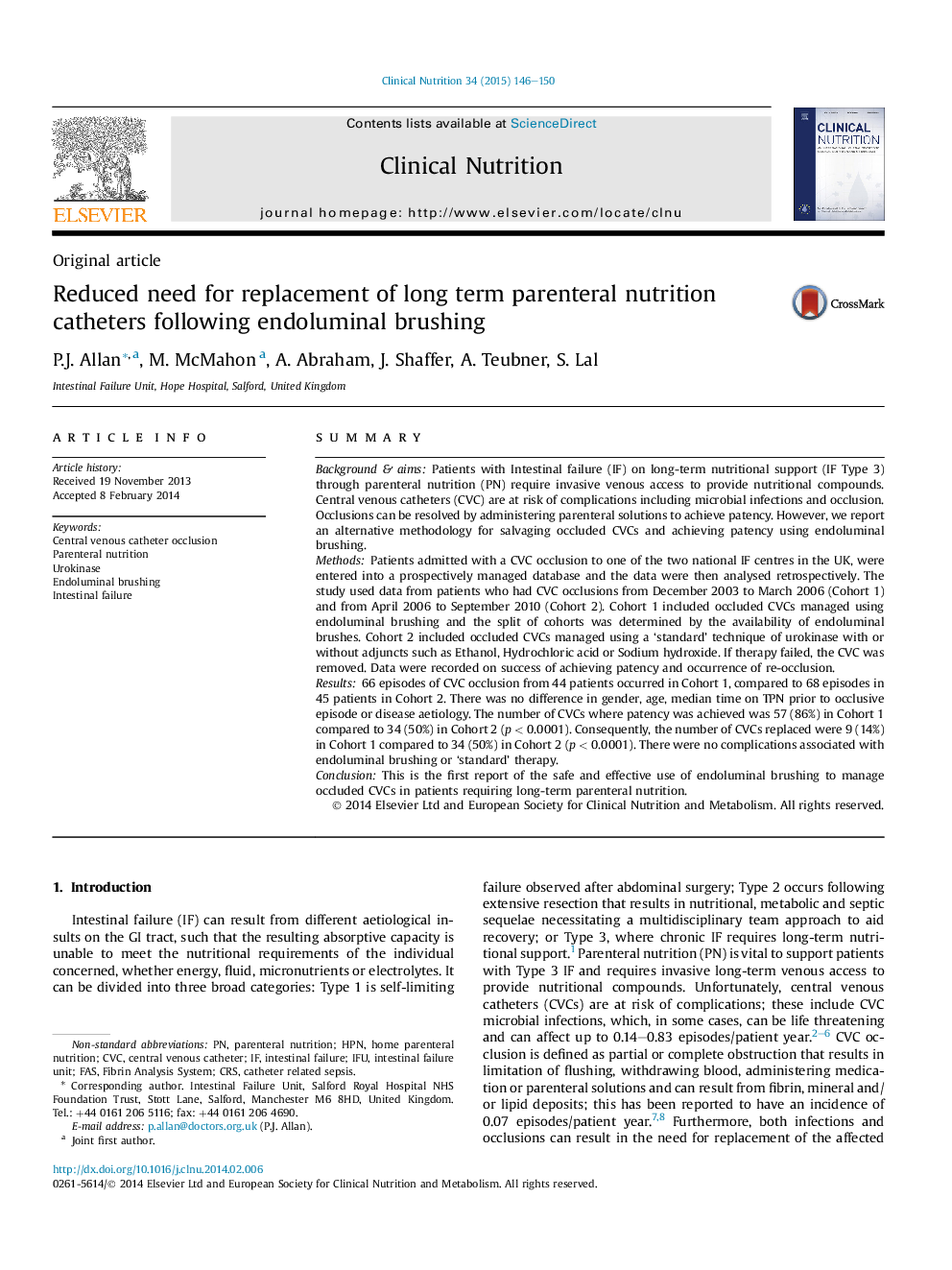| Article ID | Journal | Published Year | Pages | File Type |
|---|---|---|---|---|
| 5871475 | Clinical Nutrition | 2015 | 5 Pages |
SummaryBackground & aimsPatients with Intestinal failure (IF) on long-term nutritional support (IF Type 3) through parenteral nutrition (PN) require invasive venous access to provide nutritional compounds. Central venous catheters (CVC) are at risk of complications including microbial infections and occlusion. Occlusions can be resolved by administering parenteral solutions to achieve patency. However, we report an alternative methodology for salvaging occluded CVCs and achieving patency using endoluminal brushing.MethodsPatients admitted with a CVC occlusion to one of the two national IF centres in the UK, were entered into a prospectively managed database and the data were then analysed retrospectively. The study used data from patients who had CVC occlusions from December 2003 to March 2006 (Cohort 1) and from April 2006 to September 2010 (Cohort 2). Cohort 1 included occluded CVCs managed using endoluminal brushing and the split of cohorts was determined by the availability of endoluminal brushes. Cohort 2 included occluded CVCs managed using a 'standard' technique of urokinase with or without adjuncts such as Ethanol, Hydrochloric acid or Sodium hydroxide. If therapy failed, the CVC was removed. Data were recorded on success of achieving patency and occurrence of re-occlusion.Results66 episodes of CVC occlusion from 44 patients occurred in Cohort 1, compared to 68 episodes in 45 patients in Cohort 2. There was no difference in gender, age, median time on TPN prior to occlusive episode or disease aetiology. The number of CVCs where patency was achieved was 57 (86%) in Cohort 1 compared to 34 (50%) in Cohort 2 (p < 0.0001). Consequently, the number of CVCs replaced were 9 (14%) in Cohort 1 compared to 34 (50%) in Cohort 2 (p < 0.0001). There were no complications associated with endoluminal brushing or 'standard' therapy.ConclusionThis is the first report of the safe and effective use of endoluminal brushing to manage occluded CVCs in patients requiring long-term parenteral nutrition.
